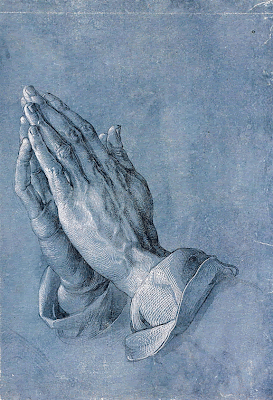Albrecht Dürer, Praying Hands
Albrecht Dürer: A study of "Praying Hands"
1508 brush drawings on blue paper prepared
29 19.7 cm Graphische Sammlung Albertina
, Vienna
Albrecht Dürer was born in Nuremberg (Germany) in 1471. His father, a goldsmith by profession was his first teacher. Heir to the legacy of German art from the late Gothic-influenced first by the Flemish paintings of Jan van Eyck and especially Rogier van der Weyden is directed initially to an empirical concept of painting that is based primarily by observation. However, in successive trips to Italy, is also absorb new trends Renaissance. The symbiosis of both currents created a painting that is characterized by reconciling rich textures, bright colors and great detail of the north with the emphasis on mythological themes and idealized figures of Italian art.
The popular book called "Praying Hands" was one of many studies for the altar that the mayor of Frankfurt, Jacob Heller, he was commissioned for the cathedral. This particular study, conducted in detail, was destined to become the hands of one of the apostles around the empty tomb of Mary in her Assumption into heaven. Dürer worked for 13 months in the central panel of this work determined to make it as good and beautiful, "which will remain bright and fresh for five hundred years."
Unfortunately, a fire in 1729 ended the altar, but we have those hands so strong, airy and spirit to remind us that the intangible at times, too, almost touched.

0 comments:
Post a Comment